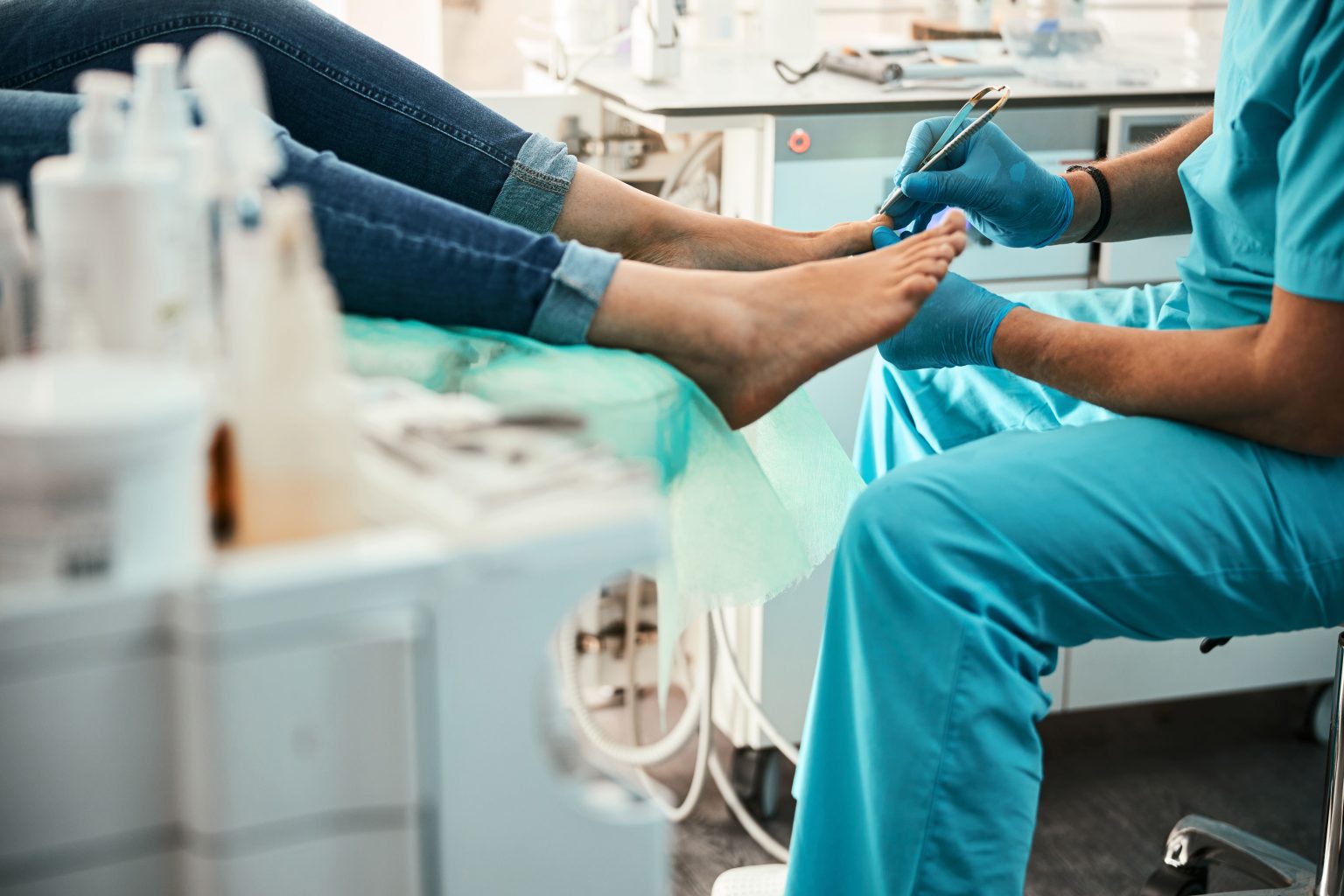
A hammer toe develops when muscle and tendon imbalances force the toe to bend at the middle joint, causing pain, stiffness, and difficulty wearing shoes. Over time, the condition can become more severe, increasing the risk of sores and infections—especially for individuals with diabetes or poor circulation. At the Foot and Wound Center, we offer specialized treatments to relieve discomfort and prevent long-term complications. If you have symptoms of hammer toes, book an appointment today for expert evaluation and care.
Hammer toe is a foot deformity that occurs when weakened muscles and tight ligaments cause the smaller toes to curl upward at the joint. The condition often results from ill-fitting shoes, trauma, or underlying medical issues like arthritis. In the early stages, the toe remains flexible, but without treatment, it can become permanently rigid. Addressing hammer toes early with conservative treatments like custom orthotics or splints can prevent worsening symptoms. For severe cases, minimally invasive procedures may be necessary to restore proper toe alignment.
Hammer toes develop when muscle imbalances cause the toe to bend downward at the middle joint, making movement difficult. Left untreated, they can become painful and even lead to complications. Spotting
Hammer toes occur when muscle and tendon imbalances force the toes into a bent position, making movement painful over time. Women are more susceptible due to restrictive footwear that squeezes the toes. Additionally, past toe injuries, genetics, and certain medical conditions like diabetes or arthritis can contribute to the development of hammer toes. Several factors increase the risk of developing this condition, such as:
Hammer toes occur when the muscles, tendons, or ligaments in the foot become imbalanced, causing the middle joint of one or more toes to bend downward instead of staying straight. This abnormal curling can lead to pain, irritation, and difficulty walking, particularly if left unaddressed. The condition commonly affects the second through fifth toes and may worsen over time.
Wearing tight or ill-fitting shoes, genetic predisposition, trauma, or medical conditions like diabetes can increase the risk of developing hammer toes. While conservative treatments like orthotic devices, toe splints, and footwear modifications can provide relief, severe cases may require surgical correction to restore normal function and prevent long-term complications.

Book your appointment with Truxtun Foot & Ankle Specialists
today for personalized care and advanced treatment.
Hammer toes can lead to persistent pain and difficulty walking, but early intervention can help. At Foot and Wound Center, our specialists provide tailored solutions, from protective padding and custom orthotics to corrective procedures when needed. For rigid or severe cases, surgical options are available to restore toe alignment. Our approach focuses on pain relief, improved mobility, and long-term foot health. Contact us today to explore your treatment options and regain comfort.
State-of-the-art wound care solutions designed to accelerate recovery, minimize scarring, and prevent complications.
Targeted therapies for diabetic wounds to enhance healing, prevent infections, and protect foot health.
Innovative procedures to save limbs at risk, restore mobility, and improve overall quality of life.
Comprehensive surgical and non-surgical treatments to rebuild structure, relieve pain, and improve movement.
Advanced, non-surgical options
Custom orthotics for support
Minimally invasive interventions
Compassionate and expert care
Solutions tailored to your needs
Find expert care for foot and wound symptoms at a Foot and Wound Center near you.


1408 Commercial Way Suite A,
Bakersfield, CA 93309
If you are dealing with non-healing wounds or painful ulcers, we encourage you to schedule an appointment with our wound care specialists. Early diagnosis and advanced treatment are essential to prevent infections, promote healing, and restore your skin’s health. Please schedule an appointment at one of our wound care centers in Bakersfield, CA, for expert, patient-centered care.
Real stories of recovery and expert care from our patients.
Discover expert guidance on treatments, preventions, and advanced wound care solutions.
Find expert care for foot and wound symptoms at a Foot and Wound Center near you.
© Copyright 2024 Vascular Health Partners LLC. All Rights Reserved